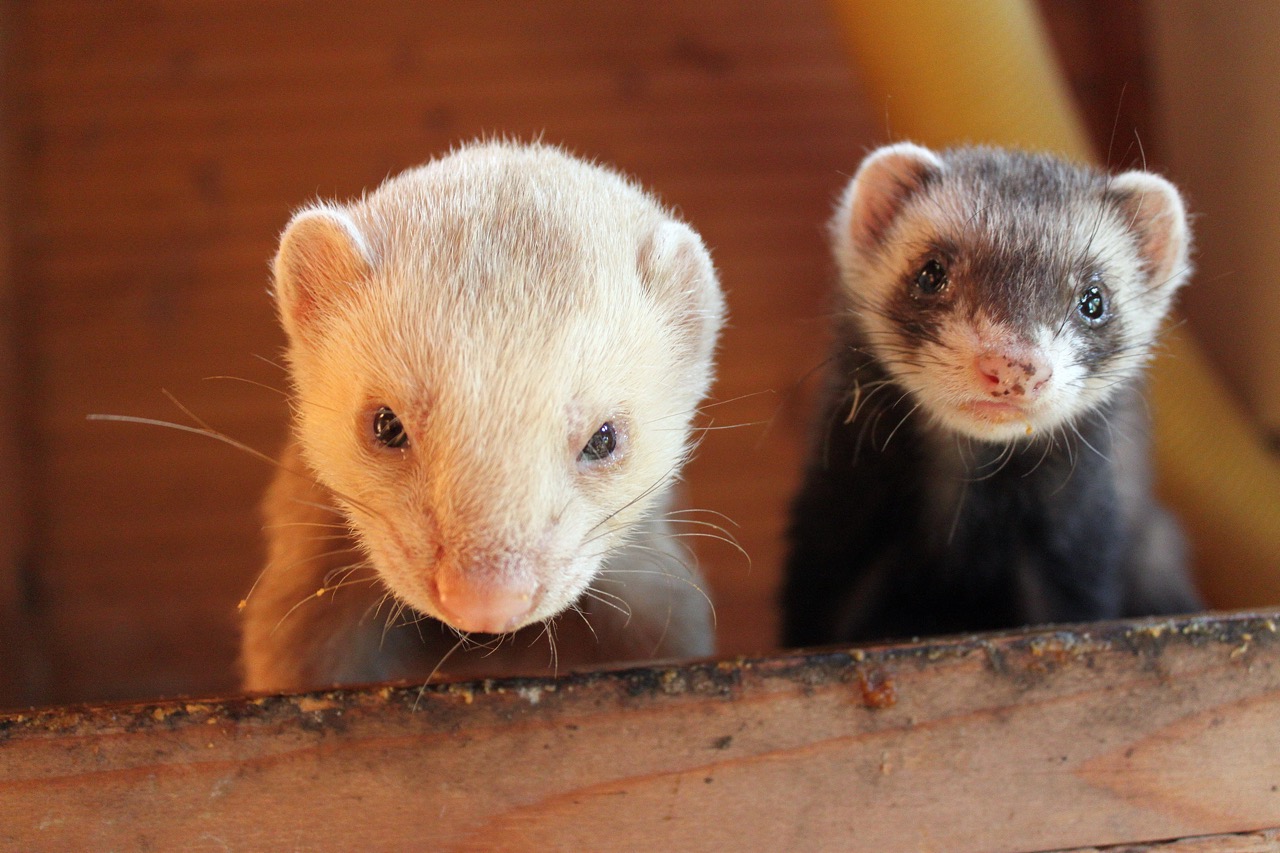Ferrets, belonging to the weasel family, are known for their playful nature and curious behavior. Among their many traits, the role of scent glands and pheromones in communication stands out as a fascinating aspect of their social structure. Understanding how ferrets utilize these chemical signals can provide insights into their behavior and social interactions, enhancing our ability to care for them and appreciate their complex social dynamics.
Understanding Ferret Scent Glands and Their Functions
Ferrets possess several scent glands located throughout their bodies, with the most notable being the anal glands and the sebaceous glands. The anal glands, situated near the digestive tract, are particularly significant as they produce a pungent secretion that serves various communicative purposes. These glands are activated when ferrets are excited, frightened, or during mating behaviors, releasing substances that convey crucial information to other ferrets in the vicinity.
Sebaceous glands, found on the skin, also contribute to scent communication. These glands secrete oils that can carry a range of pheromonal messages, providing information about a ferret’s health, territory, and reproductive status. The intricate network of scent glands and their secretions allows ferrets to communicate a wide array of messages without needing vocalizations, facilitating a subtle but complex form of social interaction.
Understanding the anatomy and function of these scent glands is essential for ferret owners and enthusiasts. Knowledge of how these glands work can help in recognizing behavioral changes in ferrets, such as increased scent marking, which may indicate stress, hormonal changes, or the presence of other animals in their environment. This awareness can ultimately lead to better care and management of ferrets in both domestic and wild settings.
The Role of Pheromones in Ferret Communication
Pheromones are chemical substances that influence the behavior and physiology of other individuals of the same species. For ferrets, pheromones serve as a vital communication tool, transmitting information about individuality, reproductive readiness, and social hierarchy. When ferrets mark their territory with scent, they release pheromones that signal their presence and establish boundaries with other ferrets, reducing the likelihood of confrontation.
The reception of pheromonal cues occurs primarily through the vomeronasal organ, an essential structure in the nasal cavity that detects these chemical signals. When a ferret encounters another’s scent, it may engage in specific behaviors, such as sniffing or rubbing against the scent-marked area, which can reveal valuable insights about the other ferret’s identity, health, and reproductive status. This nuanced communication is critical in establishing social bonds and navigating relationships within ferret communities.
Additionally, pheromonal communication can be context-dependent, varying with the situation. For example, a ferret may produce different pheromones when feeling threatened compared to when it is seeking a mate. This adaptability allows ferrets to convey immediate, situational messages to their peers, ensuring that social interactions are fluid and responsive to the ever-changing dynamics of their environment.
Types of Pheromones Produced by Ferrets
Ferrets produce various types of pheromones, each serving different communicative functions. One of the most important is the alarm pheromone, which is released when a ferret senses danger. This pheromone alerts other ferrets in the area, prompting them to either flee or prepare to defend themselves. Alarm pheromones are crucial for survival, as they enable quick responses to potential threats.
Another significant type is the courtship pheromone, which ferrets release during mating season. These pheromones signal reproductive readiness and attract potential mates. The presence of these pheromones can lead to heightened mating behaviors and increased competition among males, underscoring the role of scent in reproductive strategies. Female ferrets, or jills, can also emit pheromones that indicate fertility, further facilitating mating interactions.
Territorial pheromones are also noteworthy; they convey ownership and prevent encroachment by other ferrets. When a ferret marks its territory, it leaves behind a unique scent that signifies its presence and deters rivals. This type of pheromone communication is vital in establishing social hierarchies, as it helps maintain order within ferret communities and minimizes conflicts over resources and space.
Implications of Scent Communication for Ferret Behavior
The intricate system of pheromone communication profoundly influences ferret behavior. Understanding the messages conveyed through scent can help ferret owners interpret their pets’ actions more accurately. For instance, increased scent marking may indicate territorial disputes or stress, prompting owners to assess the ferret’s environment and interactions with other animals. Recognizing these signals can help in creating a more harmonious living situation for ferrets, ultimately leading to better welfare.
Moreover, ferrets are highly social animals, and scent communication plays a crucial role in their interactions with one another. By understanding how pheromones influence social behavior, owners can foster healthier relationships among ferrets in multi-pet households. Encouraging positive interactions, such as play and social grooming, can help mitigate the stress that may arise from competition or territoriality, promoting a more cohesive social structure within the group.
Additionally, the implications extend to breeding and health management as well. For breeders, understanding pheromonal cues is essential for recognizing the signs of estrus in females and monitoring the reproductive behaviors of males. In terms of health, changes in scent production can indicate underlying medical issues, enabling early intervention and care. In this way, knowledge of ferret scent communication has practical applications for ensuring the well-being and happiness of these charming animals.
In conclusion, the study of ferret scent glands and the use of pheromones for communication paints a vivid picture of the complexity of ferret social lives. By understanding the functions and implications of these chemical signals, we gain deeper insights into their social behaviors, reproductive strategies, and overall well-being. As we continue to explore the fascinating world of ferret communication, we can foster better care practices and enrich our relationships with these endearing creatures.










